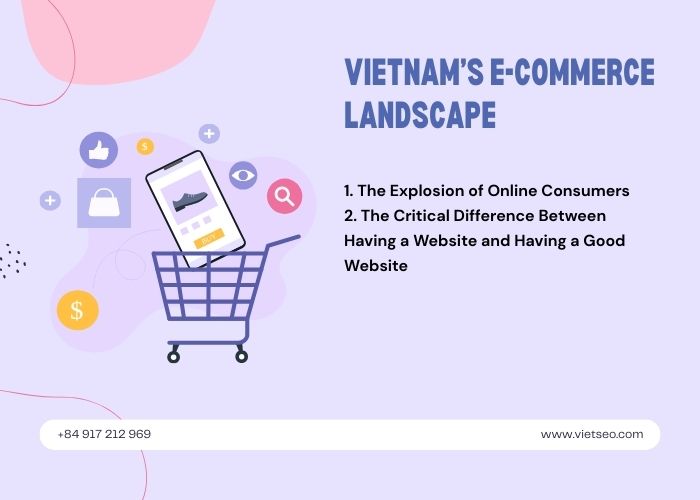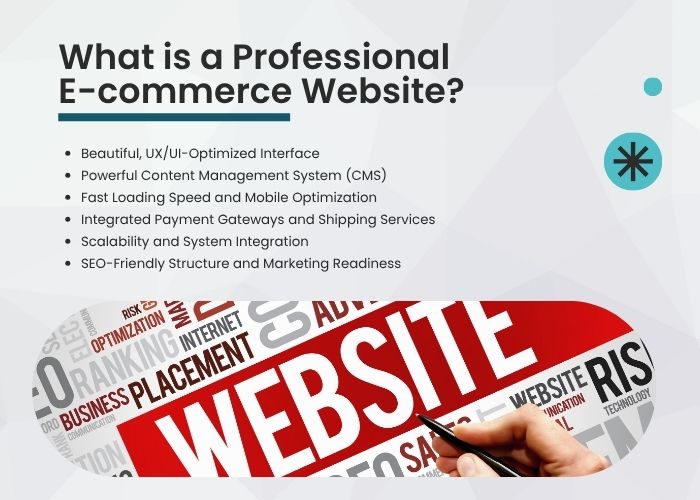Accurate Website Design Pricing Methods
When first approaching website design services, the most common questions clients ask are:
- "How much does website design cost?"
- "Based on what criteria is website design pricing calculated accurately?"
- "How can I avoid vague pricing or unexpected additional costs?"
Website design pricing is not as simple as pricing a ready-made product. A website is a highly customizable technological solution, depending on many factors: business goals, technology used, UI/UX requirements, specific features, and maintenance and support services.
In this article, we will explore:
- The most accurate website pricing methods
- Key factors influencing website design costs
- Common client misconceptions about website pricing
- Website pricing and service pricing trends for 2025–2030
- How to work transparently with design partners to control the budget
Website Design Pricing: Why Is There No "Standard" Price?
In today’s market, if you ask 10 website design companies, you will likely receive 10 different quotes - possibly ranging from a few million to several dozen million VND, or even hundreds of millions.
Why is this? Because website design is a highly personalized service. There is no single "standard" price list applicable to all websites.
1. Each website has its own characteristics
- Company profile websites → different requirements from e-commerce websites.
- Tech startup websites → different requirements from sales landing pages.
- Internal corporate websites → different requirements from community portals.
2. Technical complexity and features greatly impact costs
- Websites with advanced features such as member login, API integration, personalized content... will incur higher costs.
- Simple company profile websites with no special functions → lower costs.
3. Service quality and support commitments
- Some providers offer low prices but without clear contracts or warranty → risky later on.
- Reputable providers usually offer full contracts, maintenance, and warranty → higher prices but safer.
Factors Influencing Website Design Pricing
To understand how website pricing is formed, you need to understand the following main factor groups:
1. Website scale and type
- Company profile website
- E-commerce website
- Landing page website
- News, media website
- Online learning website (LMS)
- Internal social network website
- Website integrated with ERP/CRM systems
Each type has very different requirements in terms of structure, features, and technology → directly affects pricing.
2. Technology used
- CMS-based website (WordPress, Joomla, etc.) → lower cost.
- Custom coded website → higher cost, requires more development time.
- Websites using newer technologies like Headless CMS, SPA (Single Page Application) → higher costs but optimized performance.
3. UI/UX design requirements
- Using existing templates → lowers cost.
- Custom UI design based on brand requirements → increases cost due to bespoke design.
- The level of user experience (UX) optimization → higher UX requirements, more testing needed → higher cost.
4. Features and integrations
- Page count.
- Dynamic features: shopping cart, online payment, booking, chatbot, social media integrations...
- API integration from third parties (CRM, ERP, email marketing, internal systems...).
- Flexible content management capabilities.
5. SEO and speed optimization requirements
- If the client requests on-page SEO optimization from the start → requires additional time for optimization → increases cost.
- If PageSpeed Insights score above 90+ is required → higher level of technical optimization → increases cost.
6. Included services
- Is domain and hosting included in the quote?
- Is SSL (free or paid) included?
- Is Google Analytics and Google Search Console setup included?
- Is client training included?
- Is warranty and maintenance included?
The Most Accurate Website Pricing Methods
Choosing the right pricing method is crucial when working with a web page design service, as it helps ensure transparency and alignment with your project’s needs. Below are the most accurate website pricing methods to help you better understand how costs are calculated and how to select the best service package for your business.
1. Itemized pricing method
- This method is used by professional website design companies.
- Pricing is broken down by item, allowing clients to choose:
Example:
| Item | Price (VND) |
|---|---|
| UI design | 1,500,000 |
| Website development (CMS) | 2,000,000 |
| Basic SEO optimization | 1,000,000 |
| Shopping cart & payment integration | 1,000,000 |
| Domain registration + 1-year hosting | 1,000,000 |
| Total | 6,500,000 |
Pros: Transparent, easy to select.
Cons: Clients need some understanding to evaluate each item.
2. Package-based pricing method
- Simpler → divided into packages such as:
- Basic package
- Advanced package
- Premium package
Example:
- Basic package: 10–15 million VND (simple company profile website)
- Advanced package: 20–30 million VND (e-commerce website)
- Premium package: 40–80 million VND (advanced e-commerce website with integrations)
Pros: Easy to understand, easy to choose.
Cons: May not fit highly customized needs.
3. Time & material pricing method
- A flexible pricing method, often used for large, complex projects.
- The design company charges based on working hours of personnel (PM, designer, developer...).
- Clients pay based on actual hours incurred.
Pros: Flexible for continuously evolving projects.
Cons: Difficult to control the budget if there is no clear plan.
4. Value-based pricing method
- Some high-end companies use this method.
- Instead of calculating based on effort, they price based on the value the website brings to the business.
Example: If a website is built to support online sales expected to generate 5 billion VND/year → a reasonable investment cost might be 100–200 million VND.
Pros: Focuses on business effectiveness.
Cons: Difficult to apply for small projects or when the client’s expectations are unclear.
Common Misconceptions About Website Pricing
1. Are cheap websites the same as expensive websites?
False.
Cheap websites usually use existing templates, limited features, minimal SEO/speed optimization, and lack long-term warranty.
2. Is "beautiful" enough?
False.
A website must ensure multiple factors: speed, security, SEO, scalability... Not just the interface.
3. Is website design a one-time cost with no operating expenses?
False.
Websites always have operating costs such as: hosting, domain, security updates, data backup...
Website Pricing Trends for 2025–2030
1. Shift toward value-based pricing
- Businesses are increasingly concerned about return on investment → website design companies will gradually adopt value-based pricing.
2. Pricing bundled with operation services
- Instead of one-time pricing, many companies now offer lifetime subscription packages: design + hosting + updates + support.
→ Helps clients control costs more easily and not worry about technical operations.
3. Using AI to optimize design costs
- AI will help reduce UI/UX design costs, shorten website design time.
- However, costs for developing custom features or optimizing SEO will remain important.
How to Work with Web Design Providers to Control the Budget
- Clarify needs and project scope from the beginning → avoid frequent changes (which incur costs).
- Request detailed itemized pricing.
- Clearly define items included in the quote (domain, hosting, SSL, warranty...).
- Sign a firm contract with clear terms.
- Budget for future operating costs.
Conclusion
Website design pricing is a process that requires transparency and a clear understanding of client needs. Do not simply compare prices "on the surface"; instead, consider the real value the website brings:
- Does it help reach potential customers?
- Does it help increase conversion rates?
- Does it ensure speed, security, SEO, and scalability?
When these factors are clarified, pricing will become accurate, transparent, and build trust between clients and design providers.



